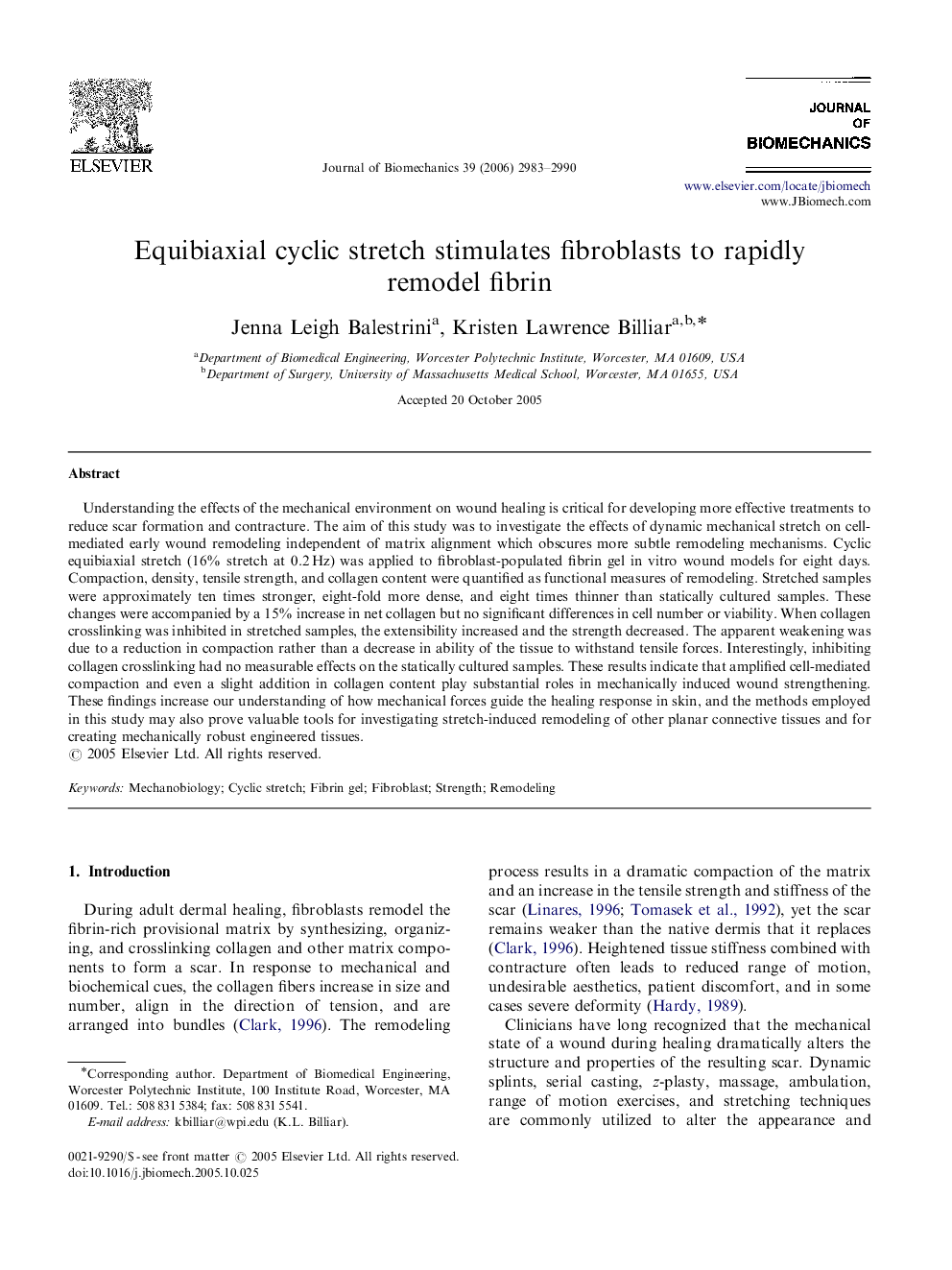| Article ID | Journal | Published Year | Pages | File Type |
|---|---|---|---|---|
| 874481 | Journal of Biomechanics | 2006 | 8 Pages |
Understanding the effects of the mechanical environment on wound healing is critical for developing more effective treatments to reduce scar formation and contracture. The aim of this study was to investigate the effects of dynamic mechanical stretch on cell-mediated early wound remodeling independent of matrix alignment which obscures more subtle remodeling mechanisms. Cyclic equibiaxial stretch (16% stretch at 0.2 Hz) was applied to fibroblast-populated fibrin gel in vitro wound models for eight days. Compaction, density, tensile strength, and collagen content were quantified as functional measures of remodeling. Stretched samples were approximately ten times stronger, eight-fold more dense, and eight times thinner than statically cultured samples. These changes were accompanied by a 15% increase in net collagen but no significant differences in cell number or viability. When collagen crosslinking was inhibited in stretched samples, the extensibility increased and the strength decreased. The apparent weakening was due to a reduction in compaction rather than a decrease in ability of the tissue to withstand tensile forces. Interestingly, inhibiting collagen crosslinking had no measurable effects on the statically cultured samples. These results indicate that amplified cell-mediated compaction and even a slight addition in collagen content play substantial roles in mechanically induced wound strengthening. These findings increase our understanding of how mechanical forces guide the healing response in skin, and the methods employed in this study may also prove valuable tools for investigating stretch-induced remodeling of other planar connective tissues and for creating mechanically robust engineered tissues.
